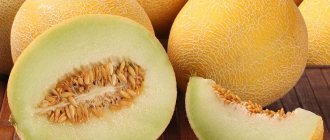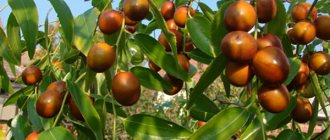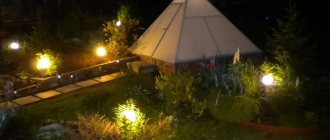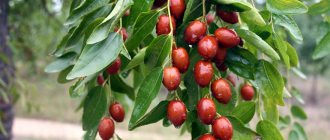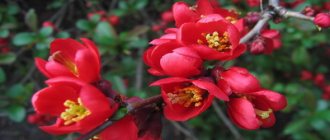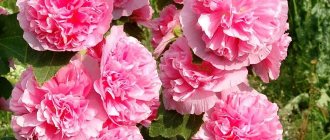Features of the double jasmine flower
Double jasmine is an unpretentious plant. The garden shrub, or mock orange, as it is often called, is not like ordinary jasmine, which belongs to the Olive family. Mock orange is a representative of hydrangea plants. It exudes a pleasant sweetish aroma. That is why it is compared to jasmine. Different varieties have their own unique notes.
Terry jasmine
Garden jasmine has large white or cream-colored flowers. They are small or medium in size.
For reference! The name mock orange appeared due to the fact that the branches of the bush served as raw materials for the manufacture of mouthpieces and chibouks. This is the part of the smoking pipe located in front of the tobacco chamber.
At the beginning of the 20th century, breeders bred the first double flower. It resembled small roses. Scientists continued their work, which led to the creation of more than 60 varieties of terry plants. Many of them are still popular among gardeners.
Popular plant varieties
Jasmine "Sambac" - popular varieties, how to care
Terry jasmine has a subtle aroma, but thanks to the abundance of flowers, the smell becomes noticeable. Different varieties of plants have their own characteristics, which makes them unique.
Virginal
Virginal is a tall shrub, it grows up to three meters. The smell of the buds is sharp. Virginal blooms twice a year.
Minnesota snowflake
The branches of Minnesota snowflake droop to the ground under the weight of the flowers. Their diameter does not exceed three centimeters, but they grow in groups of 5, so they are located tightly, hiding the foliage.
The stamens are golden, but there are few of them, making them invisible against the background of white petals. The aroma of the bush is sweet, with notes of citrus.
Pyramid
The height of the Pyramid does not exceed three meters. The shrub blooms late, spreading a delicate, subtle aroma.
Schneeshturm
Schneeshturm is a fast-growing shrub that rapidly gains height. The aroma of snow-white flowers contains clearly distinguishable fruity notes.
Ermine mantle
Ermine mantle is a low plant. Its buds look slightly drooping, so it seems that the flowers are falling like a mantle. They delight gardeners for 1.5 months.
Ermine mantle
blizzard
The large flowers of Blizzard hide the leaves. Their petals are drooping, as if they have been wet by the rain and are bowing under the weight of the drops.
Additional Information! The Moth Ballet variety got its name due to the resemblance of the petals to insect wings. And the aroma of Yunnat resembles the smell of strawberries. This variety has gained great popularity among gardeners.
Botanical description
A shrub reaching a height of 1.5 to 3 m, with thin gray bark. Some varieties of plants have brown bark at the age of 1-2 years. The wood of “terry jasmine” is hard, with a wide core. The branches are covered with leaves 5–7 cm long, ovoid, oval or elongated in shape. Large, double flowers of white, creamy white or yellowish color are collected in dense inflorescences from 3 to 9 pieces each.
Planting in open ground
The health of the plant and the flowering period depend on the correct planting of terry jasmine. It is enough to follow simple rules to enjoy the unobtrusive aroma of an attractive shrub in the summer. Even a beginner in the world of gardening can grow an attractive shrub.
Selecting a location
Jasmine bush - what it looks like, types
Double jasmine loves diffused light. It is necessary to protect the shrub from the scorching rays of the sun by planting it near the house or in the shade of trees.
Note! Diffused lighting is necessary for abundant flowering. The more sun the plant receives, the larger the buds are set.
Preparing the soil and flower
To wait for flowering and not damage the jasmine, planting and care in open ground require compliance with a number of rules. The main thing to remember is that the plant needs fertile soil, and you need to avoid stagnation of liquid at the roots.
It is recommended to plant the shrub in early spring, before the buds open. Then the jasmine will have time to take root and delight gardeners with abundant flowering.
To protect against groundwater, drainage is used:
- broken brick;
- pebbles;
- sand;
- crushed stone
Materials must be laid in a layer at least 15 centimeters high. It is easier to plant the plant on a hill, then the root system will not require additional protection.
Note! Cuttings for planting are selected about 12 centimeters long. They must be flexible and not break when bent into a ring. The lower leaves on the branches are torn off.
Steps to take when planting garden jasmine:
- Dig a hole 55-60 centimeters deep.
- Prepare the soil by adding humus. It should make up a third of the soil. Add mineral fertilizer containing nitrogen, phosphorus, potassium - nitrophoska.
- When planting a seedling, smooth out the roots.
- Cover with soil and water generously.
- When the water is absorbed, lay peat on the top layer of soil, this will reduce the evaporation of moisture.
Trimming steps
In order for the jasmine bush to delight you every year with its fragrant, magnificent flowering and beautiful decorative forms, it is necessary to prune the bush correctly:
- In spring, approximately 5 branches should be cut off at a height of 40-50 centimeters from the soil surface, and the remaining stems should be removed to the very base of the bush.
- Fresh cuts must be treated with garden varnish to protect and quickly heal the bush.
- Shoots growing from dormant buds should be removed, leaving a few of the strongest branches on the old stems. All of them will become the basis of the updated bush.
The plant will acquire its proper appearance in a year, and after three years it will bloom profusely.
Shrub care
How to propagate garden jasmine in spring and summer
Terry jasmine is an unpretentious plant; caring for it cannot be called burdensome. The main thing is not to forget about watering, pruning and timely application of fertilizers.
Terry jasmine with proper care
Watering and humidity
Garden shrubs require abundant watering, but it is important not to overdo it. Even in hot summers, the procedure should be carried out no more than twice a week. At the same time, make sure that the top layer of soil dries out.
Excessive humidity can be harmful, as can drought. When watering, the water should be warm; it is better to prepare it in advance so that it has time to settle. About 20-30 liters of water are used at a time.
Feeding and soil
Terry jasmine requires feeding:
- during active growth, mineral fertilizers are applied;
- After flowering, potassium and phosphorus are used.
Organic fertilizers can be used once a year. Manure diluted with water will do. Be sure to dilute the raw material to avoid burning the plant. Slurry is replaced with apple or birch resin.
Important! One of the main conditions for active growth and long flowering is fertile soil. Therefore, it is recommended to use a mixture consisting of humus and compost, be sure to add sand. This will help increase the looseness of the soil and eliminate moisture stagnation.
Pruning and replanting
Every year in the spring, old and diseased branches are removed from the plant. Be sure to get rid of wilted flowers. A sanitary procedure is necessary to properly distribute the powers of jasmine.
To give the shrub a shape and an attractive appearance, long branches are cut off in early spring. It is necessary that no more than 3 shoots remain on each trunk.
Attention! It is important to maintain healthy branches.
Every 5 years, anti-aging pruning is carried out, removing almost all shoots. Only the main trunks of the bush, 5-6 centimeters high, remain. The remaining branches are cut off at the root. After this, you can replant the plant. It is better to plan the procedure for September-October or early spring. When replanting in the fall, you need to think about it so that the jasmine has time to take root before the onset of frost.
Procedure:
- Two weeks before the scheduled date, dig a hole.
- Before transplanting, water the bush generously.
- Dig up and move to a new location, rinsing the roots with water and removing damaged parts.
- Water the plant after planting.
Why do jasmine leaves turn yellow and the bush does not bloom?
Although jasmine is considered a relatively unpretentious plant, sometimes incidents still occur. All causes of yellowing leaves are associated with violation of the maintenance regime. It’s too hot and dry, or on the contrary, the plant is flooded, but the temperature is low - it freezes, or there are temperature changes and thus it responds to stress. Diseases and pests (this has already been discussed).
Lack or too much fertilizer is a very important point. As with any other plant, but especially for jasmine, it is better not to feed it than to overfeed it.
Experienced flower growers and gardeners focus on this - the doses calculated for the plant are divided in two, it is better to feed more often, but in a lower concentration
These reasons can stop flowering. Excess nitrogen is reflected in the lush crown with succulent leaves and interferes with budding. With a lack of potassium and phosphorus, the plant does not have enough strength to develop a flower. The soil will not bloom at all in alkaline soil. Full sun or strong darkness also affects flowering.
Approach your pet with love, make sure that the jasmine lives in comfortable conditions, or correct the mistakes and a lush, fragrant riot of flowers will not be long in coming.
attuale.ru
Features of flowering
Garden double jasmine boasts attractiveness during the flowering period. Therefore, shrubs are often used in site design.
Site design
Flowering begins in June and lasts about 2-3 weeks. The period is prolonged if the plant spends a lot of time in the sun. Some varieties of terry shrubs are distinguished by repeated flowering, but it is not as abundant as the first.
Additional Information! If you want to enjoy the appearance of flowers with the arrival of spring, then you should think about purchasing bare-flowered jasmine. It is also called winter.
In October, double jasmine prepares for wintering, so watering is reduced and fertilizing is stopped. Flowers and dry leaves are removed. You can postpone the process until spring and remove them along with bush branches that may be damaged in severe frosts.
Types and shape of flowers
Terry jasmine flowers of different varieties differ in size, number of petals and shade. Most often they are snow-white, but they can be cream, pearlescent, pink and even greenish.
The buds themselves can be small, 2-3 centimeters in diameter, some varieties reach 10 centimeters, such as Academician Komarov.
Preparing for winter
When preparing jasmine or mock orange for wintering, special attention is paid to fertilizing. These can be organic or mineral fertilizers in liquid form. How well the feeding is done, the shrub will comfortably overwinter and set buds for the next flowering.
Preference is given to potassium-phosphorus mineral mixtures. You can buy ready-made ones or make your own: superphosphate and potassium sulfate in equal quantities. After deep watering, fertilizer is applied to the dug trench, then the trench is closed, and the soil is mulched with sawdust, straw, and bark.
After the movement of sap in the tree has stopped, you need to trim the branches - thin out the shoots so that there is no thickening inside the crown.
Methods for propagating terry jasmine
There are several ways to propagate double jasmine. The simplest of them is the use of layering, the most labor-intensive is the use of seeds.
Seeds
Terry jasmine seeds will appear after it reaches 7 years. Only then does the bush begin to bloom.
The seeds are placed in prepared holes, sprinkled with soil and covered. The procedure is recommended to be carried out in winter, and you can protect it from the cold with spruce branches. Melting snow in the spring will give the seeds the necessary moisture and the first shoots will appear with the spring sun.
By layering
To propagate jasmine by layering, perform the following steps:
- The shoot is tied with wire and bent to the ground where the bud is located. It is better to place the branch in the prepared groove.
- Sprinkle with a mixture of peat and sand and wait for rooting.
Cuttings
To propagate terry jasmine, young shoots and cuttings harvested in the fall are used.
Green branches are planted in early June, creating greenhouse conditions. You can simply cover the seedlings with glass jars. When treated with a growth stimulating agent, rooting will be faster and more effective.
Autumn cuttings taken after the flowering period are planted in sand in the winter, and in the spring they are moved to greenhouses so that they can take root.
Double jasmine cuttings
Dividing the bush
When propagated by division, the bush is divided into several parts, usually 2-3. This must be done carefully so as not to damage the jasmine roots. Damaged and rotten parts of the plant are removed.
The resulting new shrubs are planted in prepared holes and watered abundantly.
Growing problems, diseases and pests
Double jasmine is a plant resistant to weather conditions and pests. Aphids and spider mites pose a danger to it.
To combat pests, use laundry soap. It is ground on a grater and dissolved in a bucket of water.
Attention! The use of the solution will get rid of pests and serve as the prevention of infectious diseases.
Double jasmine is a shrub characterized by its unpretentious nature and abundant flowering. You don't need to spend a lot of time and effort to care for it. The pleasant aroma emitted by numerous flowers will serve as a reward for abundant watering and timely feeding.
Main characteristics
The main advantage of the terry mock orange is its unpretentiousness - in order for the luxurious beauty of the snow-white flowering of the crop to be, according to the description above and in the photo, there is no need to perform complex agrotechnical techniques. Garden jasmine is a frost-resistant shrub that can withstand frosts up to 22 - 25 degrees, depending on the variety. This type of ornamental shrub has good immunity and is characterized by resistance to pests and diseases. However, it is important to carry out agricultural care techniques: remove fallen leaves in a timely manner, avoid waterlogging, provide the plant with the necessary amount of nutrients, which will ensure even greater plant resistance to infections.
